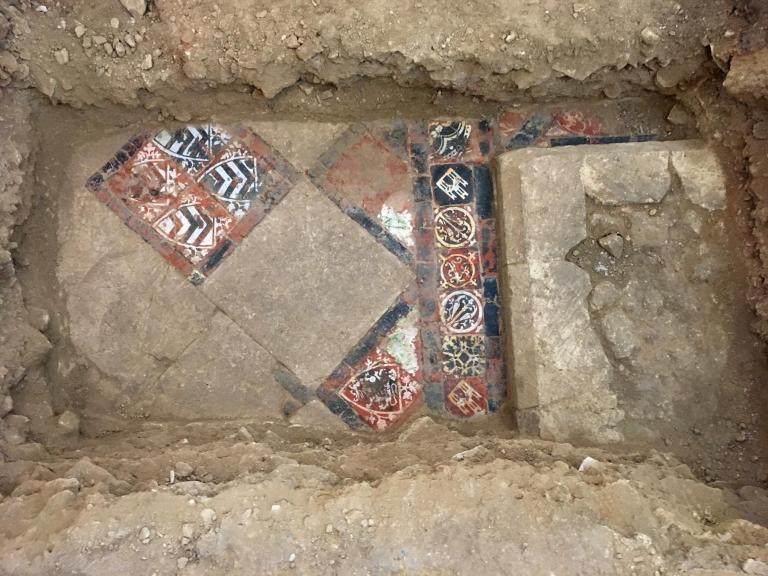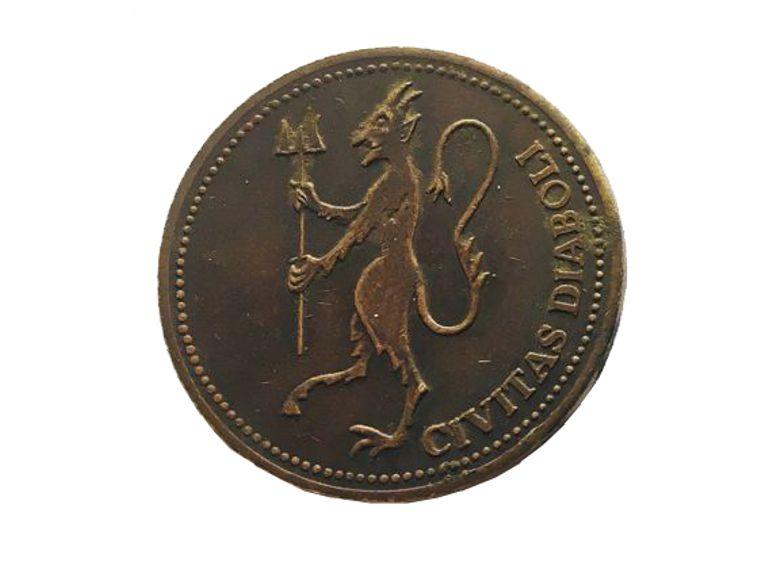On Friday 7 September 2018, Sue Nelson and Sophie Clarke (both team members from the Finds Department) travelled to Bath Abbey to conduct a training session with ten of the Abbey’s volunteers. Accompanying the event was Oliver Taylor (Head of Interpretation, Learning and Engagement), Anna Riggs (Abbey Archivist) and Frank Mowat (Executive Director).
The training session was in conjunction with the ongoing excavation currently taking place within Bath Abbey as part of the new Footprint Project.
One of the primary objectives of the Footprint Project is the stabilisation of the current Abbey floor. To facilitate the repair works a 1 m thick rubble layer from below the floor, known as the ‘Scott Layer’, has had to be removed. This layer is named after Sir George Gilbert Scott who oversaw the 1860s renovation of the Abbey. One surprising inclusion to the Scott Layer was a large volume of marble fragments from memorial plaques, dating from the 18th and 19th centuries, which would once have adorned walls and pillars within the Abbey. Presumably damaged before or during the renovation work, the carved stone was removed, broken up and used as make-up material. There are currently 70 rubble sacks full of marble fragments recovered from the current phase of archaeological works, with maybe more to come.
Wessex Archaeology in conjunction with the team at Bath Abbey realised that these intricately carved marble remains, being fairly robust, presented an ideal opportunity to offer an exciting outreach and engagement project, allowing the public to become involved with recording the archaeology of this iconic building.
For this to ensue, Sophie and Sue worked with Rachael Seager Smith (Finds Manager) to produce a recording method that was consistent with producing an archaeological report and was also useful for Bath Abbey.
The aim of the day was to upskill existing volunteers in order to process the marble fragments while meeting the Wessex standards. The volunteers would then pass on the training to school groups and visitors. Sue and Sophie explained the principles of context, stratigraphy and the post-excavation process to them.
Sophie taught the volunteers how to wash, label, store and mark the finds correctly. The training session was located in the North Aisle of the Abbey, an area open to the public and as a result, the training created a lot of interest; Sue had a very busy day networking and briefing the public about the project.
After the lunch break Sue and Sophie taught the volunteers how to correctly photograph, catalogue, count, weigh, record, draw and bag the fragments of marble, before putting them back into storage.
The day was a great success; everybody really enjoyed themselves and both parties learnt a lot! Sue and Sophie really appreciated being able to participate in supporting another heritage institution and are happy to return should any further training be required.
By Sophie Clarke, Finds Supervisor

